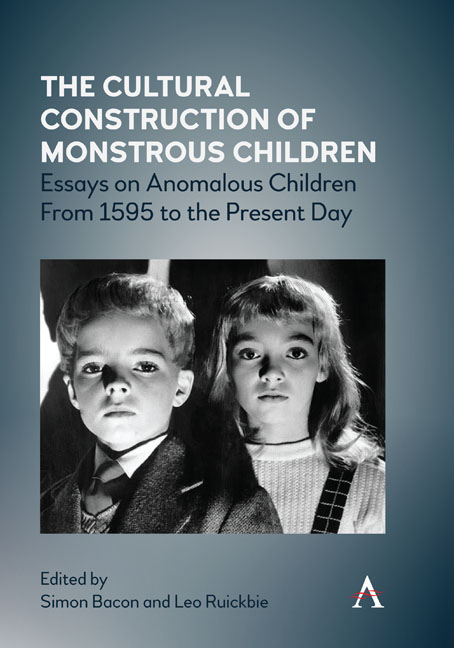 The Cultural Construction of Monstrous Children
The Cultural Construction of Monstrous Children Published online by Cambridge University Press: 20 January 2022
Introduction and a First Panoramic View
Talking about natural science is not the same as doing natural science. In the same vein, studying natural history is not natural history but cultural history. In this sense, the present chapter is a study in cultural history, and some of its philosophical ramifications, a study, however, that makes some use of our knowledge of natural history. Again, the definition of the object of natural history is neither found in nature nor in natural history; rather, and invariably, it is the result of our systematically directed curiosity, our conceptual sensibilities and our rational reconstructions – as are so many other things in science.
Often, the feral and the monstrous child are treated like two variations on the same theme. This is not quite correct. While they are comparable or complementary kinds of manifestation, they in fact differ systematically in various ways, and most of the time it is not difficult to tell one from the other. This chapter critically reflects on some parallels and differences between the ‘feral’ and the ‘monstrous’ child. The following presentations and discussions focus on the kinds and extent of the respective abnormalities as compared with the ‘normal’, unobtrusive or average child and on the ways these children used to be presented to, and sometimes hidden from, an expectant public. The feral and the monstrous child both stand out due to their deviance from accepted norms or socially shared expectations. However, they are deviant in different ways, in more ways, in fact, than are immediately apparent, to various degrees and with differing practical consequences.
The monstrous child, the prodigy, the proverbial ‘human oddity’ often has been called a ‘freak of nature’. That is, it is usually physically and organically deviant, mostly by birth; it is malformed, often obviously and severely so; and it suffers from various related handicaps in coping with everyday life. Borrowing on the freak-of-nature term, however, the feral child might be described as a ‘freak of culture’. It is culturally and socially deviant, having been deprived, for shorter, but often for protracted periods of time, mostly in their formative years, of any human company and related cultural and social input and education. The feral child in its everyday life also suffers from a variety of drawbacks and impairments.
To save this book to your Kindle, first ensure no-reply@cambridge.org is added to your Approved Personal Document E-mail List under your Personal Document Settings on the Manage Your Content and Devices page of your Amazon account. Then enter the ‘name’ part of your Kindle email address below. Find out more about saving to your Kindle.
Note you can select to save to either the @free.kindle.com or @kindle.com variations. ‘@free.kindle.com’ emails are free but can only be saved to your device when it is connected to wi-fi. ‘@kindle.com’ emails can be delivered even when you are not connected to wi-fi, but note that service fees apply.
Find out more about the Kindle Personal Document Service.
To save content items to your account, please confirm that you agree to abide by our usage policies. If this is the first time you use this feature, you will be asked to authorise Cambridge Core to connect with your account. Find out more about saving content to Dropbox.
To save content items to your account, please confirm that you agree to abide by our usage policies. If this is the first time you use this feature, you will be asked to authorise Cambridge Core to connect with your account. Find out more about saving content to Google Drive.